The Socialization Process
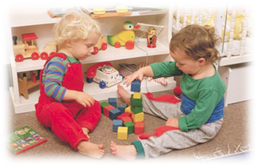
Unit Overview
Socialization is the process in which people learn to become members in society. People become socialized through the development of their personalities, their self identity, and their cognitive development. The main agent of learning socialization is the family. As you read this unit, you will understand how people are shaped.
Socialization
Socialization is
the process in which people learn to become members in society. People learn about the rules and norms of
society and adapt them and norms to their own lives. For example, we learn common courtesy as a
norm, such as opening the door for someone else, saying please and thank you,
and helping others in need. Another
example of socialization is when people act according to what others
expect. For example, children listen
when their teachers are talking since it is expected. People are quiet while attending a movie at a
theater since it is expected. People
first learn about the socialization process from their families, who shape
children’s personalities and teach them skills for survival.




Personality Development
A person’s personality includes his or her beliefs, attitudes, behaviors, and values. Our personalities include how we think, feel, and behave. Our personalities distinguish us from other people. Our personalities determine how we react to situations in life and how we adjust to our environment. People have their own individual way of interacting with others and with their environment, and each person has his or her own temperament and emotional nature. Personalities develop throughout people’s lifetimes. In childhood, children are developing physically, emotionally, and intellectually, and their personalities develop as well. Some traits may change as people develop, but some personality traits remain constant throughout a person’s life. For instance, toddlers who are determined to grab a crayon that is out of reach may become adults who are determined to land the perfect job. Once people reach adulthood, their personalities remain stable. Several factors affect a person’s personality development.
Heredity & Environment
Are people’s personalities shaped by their heredity or the environment? People inherit genetic traits such as hair
color, eye color, body build, etc., but are personalities inherited? During the 19th Century, Charles
Darwin suggested that instincts are inherited behavior patterns. Just as birds have an instinct to build nests,
people have instincts to behave in certain ways. For example, mothers have maternal instincts,
and people live in communities because of their herding instincts.
On the other hand, in the late 19th Century, Ivan Pavlov conducted
research with dogs that illustrated how learning could be learned. He taught the dogs to associate food with the
ringing of a bell, which affected the dogs’ behavior. Today, most sociologists believe that
heredity and environment shape behavior.
Sociobiology is the study of
the biological bases of social behavior.
Sociobiologists believe that most of people’s social lives are
determined by biological factors. They believe
that things such as our religious beliefs, our competitive drive, our
cooperative spirit, and our overall behavior and characteristics are rooted in
our genetic make-up.
Birth Order
Research indicates that our birth order affects our personalities. We are also affected if we are only
children. The order in which we are born
into our family affects our outlook of the world. Firstborn children tend to be achievement
oriented. They are also more likely to
be cooperative and cautious than their siblings. Later-born children tend to be more
affectionate, friendly, and creative than their siblings. They tend to be better in social
relationships as well. Only children
feel pressure to achieve and excel. As a
result, they tend to be overactive, and they seek to be involved socially,
especially in leadership roles. Only
children tend to worry more than children with siblings, and they worry about
almost everything.
Parents
For most children, the first attachment they develop is to their mother. The connection begins before birth. Babies bond with their fathers as they hold them and care for them. Parents become vital role models for their children’s behaviors and beliefs, and they help shape their children’s personalities. Children’s personalities can be affected by the parents’ age, which affects how they interact with their children. Teen parents interact much differently with their babies than parents in their thirties. Other parental characteristics that can influence children’s personalities include level of education, religious orientation, cultural heritage, economic status, and occupational background.
The Influence of Culture
Culture has a strong influence on personality development. Different cultural societies value different personality traits. As a result, society’s cultural environment determines which personality traits are emphasized. For example, the U.S. culture encourages competitiveness, assertiveness, individualism, and friendliness. The British culture encourages indirectness when communicating, a lack of display of emotions, and humor as a communication tool.

The Development of
One’s Sense of Self
One of the most important aspects of early childhood socialization is the development of the sense of self. Self is a person’s awareness that he or she has a distinct identity that separates him or her from the rest of society. The sense of self gradually develops during childhood and changes during life. There are several theories about the development of sense of self.
Locke’s Tabula Rasa

The 17th Century philosopher John Locke believed that human babies are shaped by socialization to be generous or selfish, optimistic or pessimistic, good or bad. Babies are born with a tabula rasa, or clean or blank slate, where just about anything can be written. Babies are not born with personalities; instead they develop them through social experiences. He believed that children can be molded into any type of character through social experiences. Today, this view is generally not accepted since researchers believe biology and birth order also play a role in development. However, sociologists do believe that socialization is affected by people’s interaction with their surroundings.
Cooley’s Looking-Glass
Self
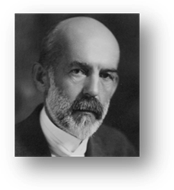
In the early 1900s, social psychologist Charles Horton Cooley suggested that people learn who they are by interacting with others. He believed that we develop a sense of self from our impressions of how others perceive us. The Looking Glass Self describes the self as developed by our social interactions with other people. Cooley developed three steps in the self-identity process.
1. First, we imagine how we appear to others, such as friends, family members, and others in society.
2. Next, we imagine how others judge us. How do people react to us? Do they see us as fat or skinny? Smart or dumb? Pretty or ugly? Do we view ourselves the same as others do?
3. Last, we use these perceptions of others’ judgments to develop feelings about ourselves. People may develop a sense of shame or self-respect, a sense of incompetence or self-confidence, depending on how we believe that others judge us.
The combination of feelings becomes a person’s sense of self. People’s sense of self is based on how they imagine that others view them, which may
be incorrect. For instance, a young boy
may believe that his friends find him to be weird and strange. As a result, the boy sees himself as different
from other kids his age, and he becomes insecure.
It is important to note that Cooley’s views put a lot of responsibility on
parents and the primary group members.
Children’s perception of how their parents view them greatly affects
their sense of self. Children who
imagine that their parents’ think their abilities are poor, may develop a sense
of inferiority. If they imagine that
their parents see them as talented, they develop self-confidence. Other primary group members like siblings and
grandparents can have this same effect. Cooley does find that the development of self
starts in early childhood, but continues throughout life. We can redefine our self images at any time.
Meade’s Role-Taking
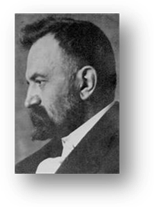
Like Cooley, American philosopher George Herbert Meade based his role-taking theory on how social interactions shape people’s personalities. Meade developed three distinct phases of the development of self.
The Preparatory Stage
The preparatory stage is where children imitate the people around them,
especially family members. Children may
cook using their play kitchens, just as their moms do. They may lay out the newspaper and “read”
just as their dads do.
The Play Stage
The play stage usually begins around the age of three. Children in this phase develop the ability to use symbols, such as gestures, objects, and language. These symbols become the basis for the children’s communication. During this phase, children develop the skill of role-taking, which is when they take on the role of another and pretend to be someone else, such as a princess, super hero, a parent, a puppy dog, or anything or anyone that they can imagine. During the role-taking process, children learn what others expect of them. They learn to see themselves through the eyes of others.
The Game Stage
The game stage usually begins around the age of eight or nine. During this phase, children begin to understand the roles that people take around them. They learn to respond to other people’s roles as well. Children also begin to take on roles themselves, and gain an understanding that others around them take on roles as well. For example, children at this age understand that in a game of baseball, the umpire has a role, as well as the batter and the pitcher. Children understand the goals that encompass each of the roles.
Meade believes that role-taking helps people develop a sense of self. Meade explains that the self consists of two parts, the I and the me. The I is unsocialized and spontaneous. The I is self-interested, and children under the age of three rely entirely on it. On the other hand, the me stage is where children begin to become aware of other people’s expectations and attitudes, the socialized self. As we develop socially, the me side of us becomes stronger since the me helps us meet the expectations of society. However to develop into a well-rounded person in society, we need both aspects of ourselves.
Freud’s Unconscious
and Conscious Minds
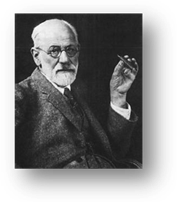
Have you ever used the term ego? Do you know people who have a big ego? Well, when using the term ego, you are using a Freudian term. Sigmund Freud is known for his work in developing psychoanalysis, which is a theory that children’s unconscious experiences and instinct-based drives largely shape their behavior and personality. Freud felt that people were not in harmony with society. Instead, people’s personality aspects were at conflict. Freud developed three aspects of the personality.
The Id
The Id is the largest portion of our mind and is present when we are born. It is the most primitive and selfish part of our personality. It is a source of the basic biological needs. Babies demand immediate fulfillment of these needs, like hunger, by crying. The Id controls other needs like physical discomfort, so a baby also cries when wet or cold.
The Superego
The Superego develops between the ages of three and six. This is the conscious part of the personality. The Superego includes the values of society and is in conflict with the Id. The Superego evolves when children interact with their parents and learn to control their biological impulses. As a result, the Superego part of the personality has the job of telling the Id no.
The Ego
The Ego develops last. The Ego is the conscious, rational part of the personality. The Ego tries to balance out the Id and the Superego, and becomes a mediator between them. The Ego tries to satisfy the Id in a socially acceptable way. The Ego serves as the heart of the personality. Freud believes that he Ego’s job is impossible, so the human personality is in constant conflict.
Here is an example of how the three aspects of personality work together. Two children are playing together, and one child wants the other’s toy. The Id wants to hit the other child and take the toy, the Superego wants to warn the Id that this type of behavior is wrong. The Ego part of the personality must decide if the Id or Superego will win this inner struggle and must work out a reasonable compromise, such as asking to take a turn with the toy.
Piaget’s Stages of
Cognitive Development
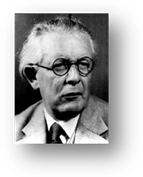
Psychologist Jean Piaget influenced research in child development through his work in cognitive development, which includes the changes over time in the way we think, learn, reason, and acquire language. Our development grows as we actively manipulate and explore our world. Piaget developed four stages that children go through.
Stage 1
The first stage is the sensorimotor stage, which occurs from birth to age two. During this phase children develop motor and sensory skills, and begin acting on the world with their hands, eyes, and ears. They learn to move their hands to reach an object, coordinate body parts to crawl then walk, and develop favorite choices of foods. Babies begin to distinguish hands, feet, eyes, mouth, etc. as part of themselves, separate from all other objects.
Stage 2
This stage is the preoperational stage, which occurs from the ages of two to seven years of age. During this stage, children use words and symbols to describe ideas or objects. Children develop language and make-believe play. Children communicate with others but are still self-centered and cannot see the points of views of others. Children have not yet developed logic and have not yet grasped concepts such as volume, speed, or weight.
Stage 3
This stage is the concrete operational stage, which occurs from the ages of seven to twelve. During this stage, children develop logical reasoning. Children understand that a certain amount of water remains the same even if the appearance changes. Thinking though is not yet abstract. Concepts such as love and death only have meaning in concrete references such as love is kissing mommy and daddy.
Stage 4
This stage is the formal operational stage, which occurs from twelve years and older. Adolescents can think in abstract terms, such as problems in advanced mathematics or scientific problems. They can also compare and contrast ideologies such as communism and capitalism. Adolescents also develop a sense of morality and are able to think about and question moral values. They can also develop their self-images and future dreams.
Overall, children learn behavior through agents of socialization. These agents are individuals and institutions that teach society’s culture. The family is the principal agent of socialization for children. Family members teach children attitudes, values, and norms. These are taught through verbal and nonverbal cues. Some key areas of influence include gender roles and love and affection. Schools and daycare centers teach children knowledge and life skills. They teach these through a curriculum and/or teacher behaviors and attitudes. Some key areas of influence include adult authority and peer relationships. Peer groups teach children about how to behave in voluntary relationships. Peer groups’ influences grow stronger with age and can be indirect and frequent. Key areas of influence include friendship, playmates, and business relationships. The last agent is the mass media. The media teaches societal attitudes, values, and norms. It provides all kinds of information. It can teach this unintentionally by children watching too much television or intentionally due to programming. Key areas of influence include attitudes about politics, fashion, social expectations, and attitudes toward violence and vice.
Activity:
Personality Development
The four main factors that affect
personality development are heredity, birth order, parental characteristics,
and cultural environment. Let’s relate
these factors to a notable psychologist that we studied in this unit, Sigmund
Freud.
Go to the following website using
this link:
http://www.notablebiographies.com/Fi-Gi/Freud-Sigmund.html
or view as a PDF file.
This site is very comprehensive,
providing his biography and work. If you
wish, feel free to find other sites as well.
After you spend time exploring the website, put together a presentation,
using either Microsoft PowerPoint or Microsoft Word. Add clip art and bright, bold colors. The following pages or slides should be
included:
- Cover Page: Include your name and the subject, which
is Sigmund Freud.
- Heredity: Provide points explaining how Freud’s
personality is shaped by heredity.
- Birth Order: Provide points explaining how Freud’s
personality is shaped by birth order.
You may want to look at the family structure as well.
- Parental Characteristics: Provide points explaining how Freud’s
personality is shaped by parental characteristics.
- Cultural Environment: Provide points explaining how Freud’s
personality is shaped by cultural environment.
You need 2 to 4 points per
page. They do not need to be in
paragraph form, but rather presented in a fun, exciting way with color,
pictures, etc. If you explore other
websites, be sure to include the URLs for those sites on a separate slide (#6).
You will submit your project to your
teacher in the questions section of this unit.
|
|
Now stop and answer
questions 1 through 26. |
